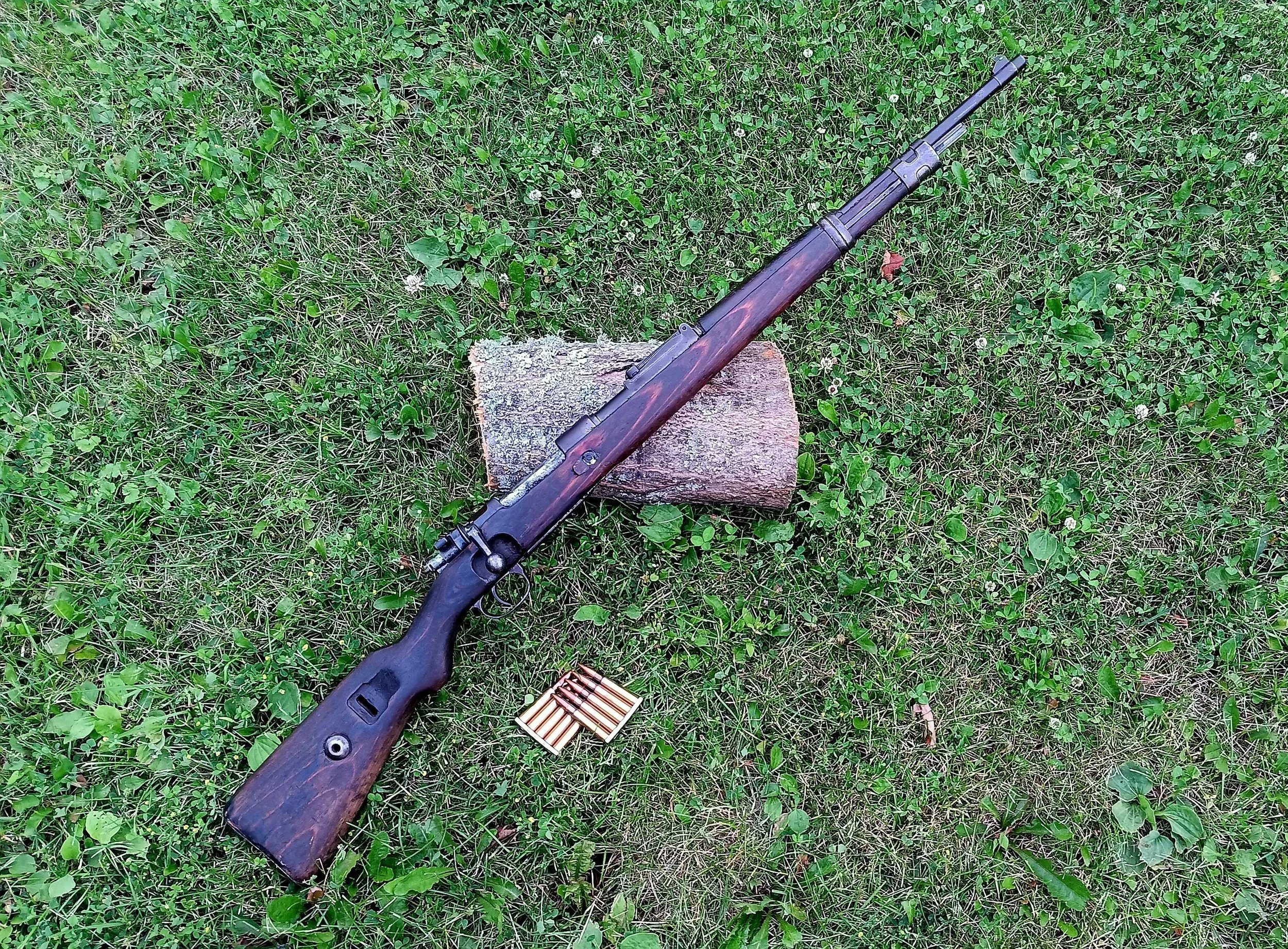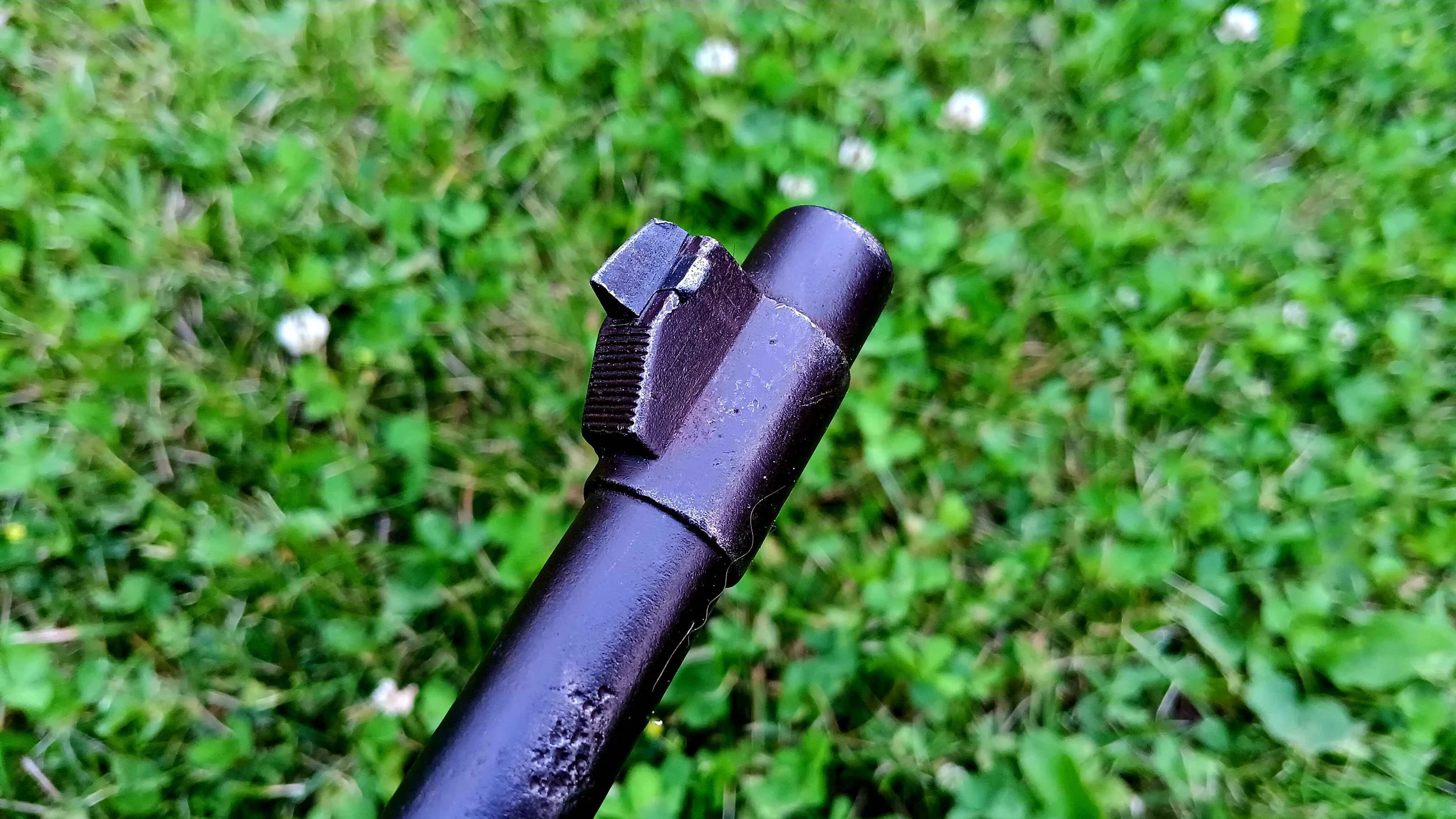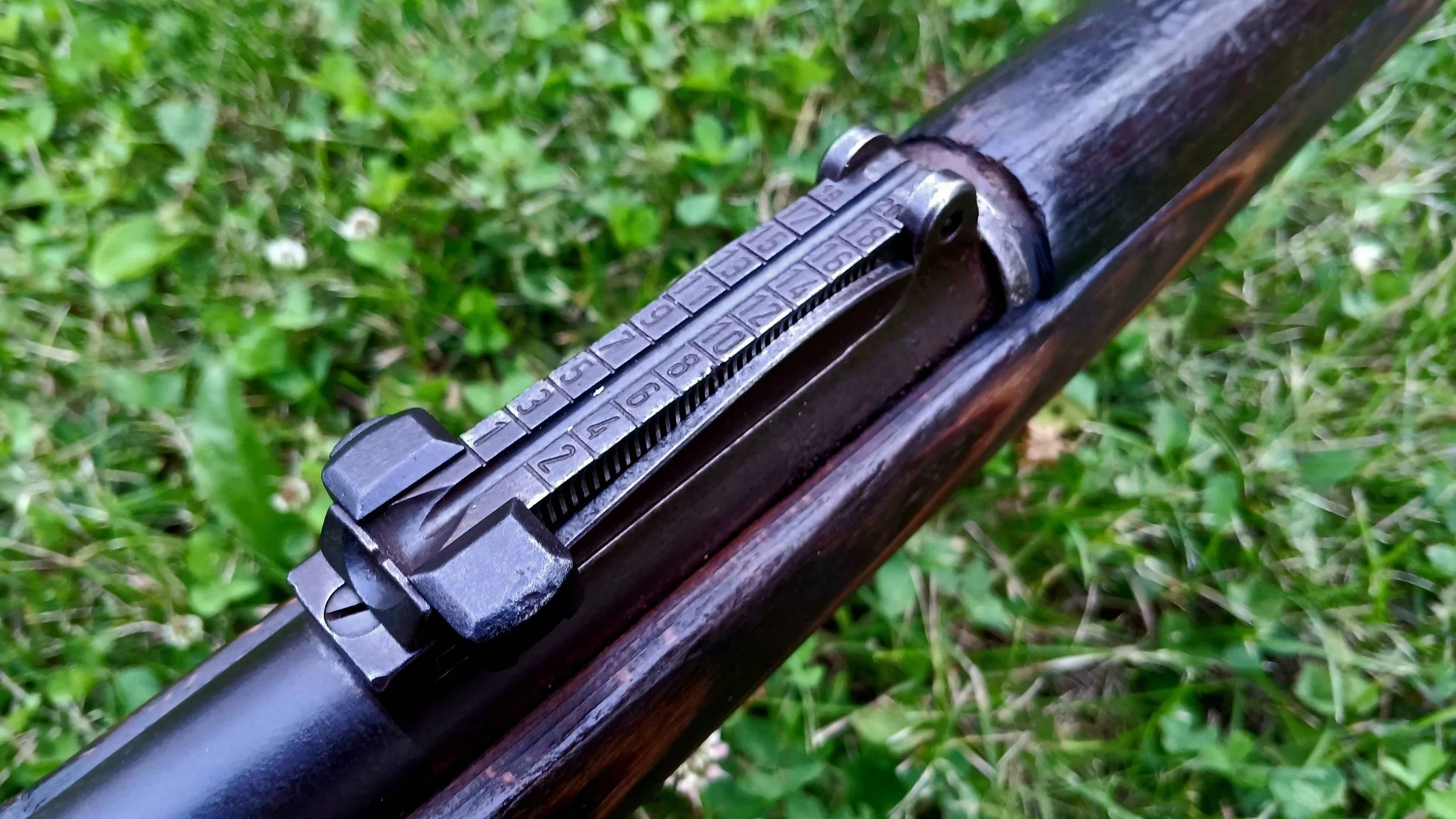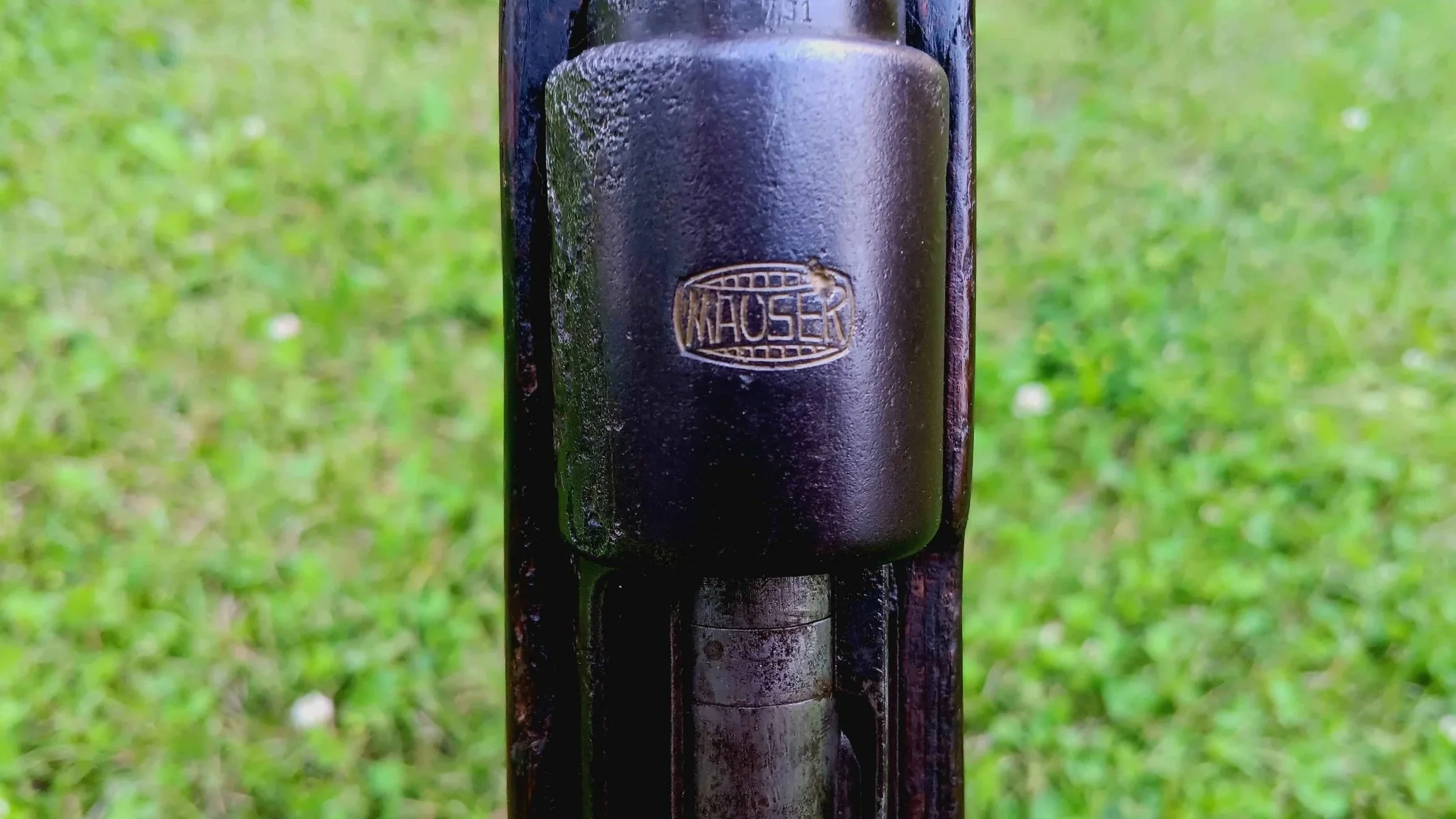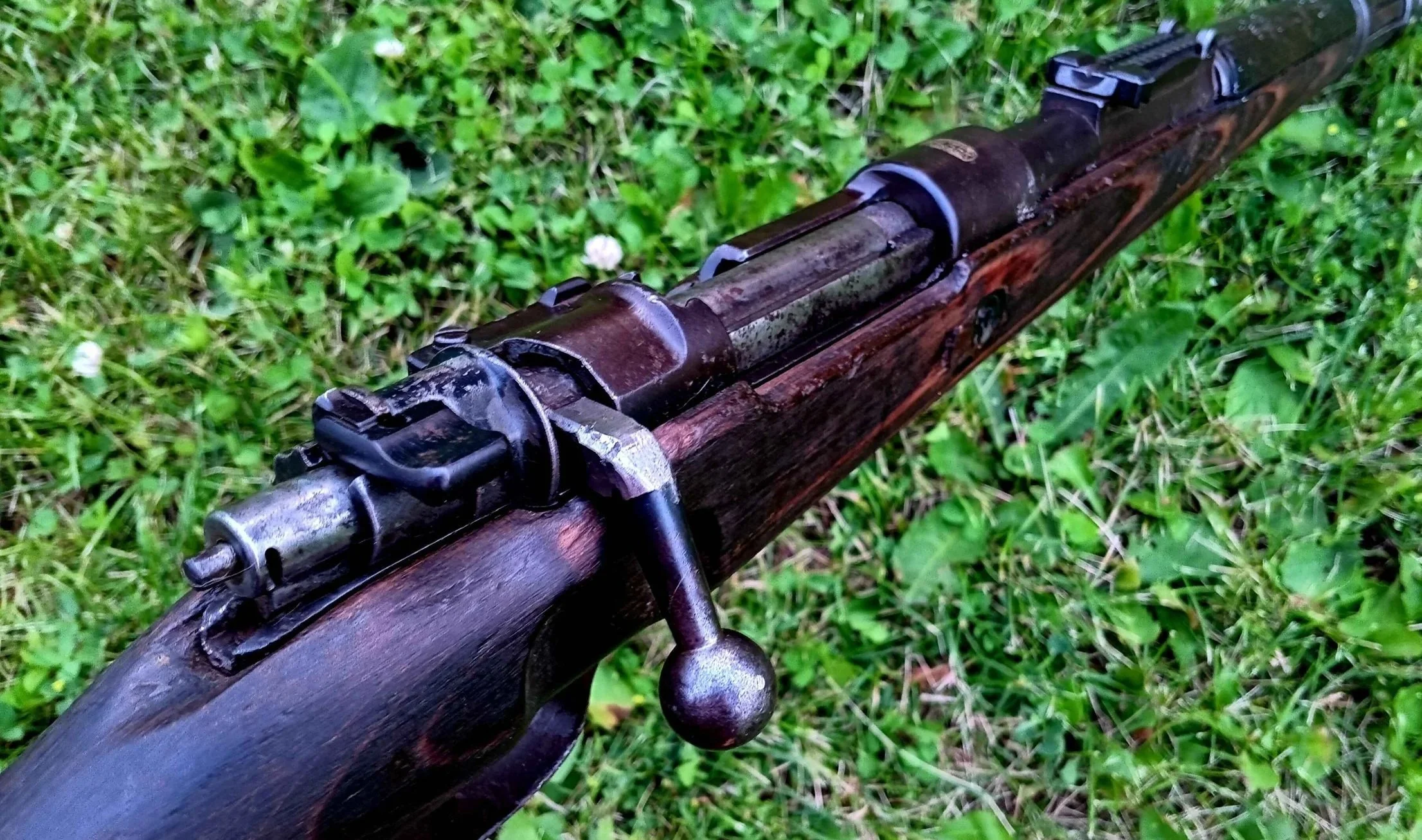Chinese Contract Kar98k
The end of a decades-long partnership between German arms manufacturers and China was a small lot of Kar98k Mauser rifles sent to Chiang Kai-Shek’s armies in the late 1930s.
The History
The relationship between China and Germany in the field of martial arms had its origins in the late Qing Dynasty, when attempts to modernize the Imperial Army had led to the adoption of variations of the Mauser rifle. Originally adopted in small batches of various export models and subsequently standardized on the Gewehr 98 pattern with their M1907 rifle, chambered in a proprietary 6.8mm Chinese cartridge, this was to be the last of the Imperial Army’s rifles. The fall of the monarchy and the creation of the Republic of China in 1911 would see the M1907 continue in service, with domestic copies appearing alongside the initial German produced examples.
The front sight is typical of pre-war Kar98k Mausers, with a ribbed ramp and no provision for a sight hood
As the interwar period continued the gold standard on the international marked became the FN or CZ model 1924 pattern short rifle, and this pattern acheived near total dominance in the global market by the early 1930s. China was no exception, purchasing these rifles to equip their National Revolutionary Army in the ongoing civil wars of the Warlord Period. In turn, the abandonment of the 6.8mm cartridge and its replacement with the German standard 7.92x57mm allowed for easier purchase of munitions abroad as well as rifles. The late entry into the market of the German Standardmodell in 1935 allowed a new standard type to enter service, with domestic copies designated the “Chiang Kai-Shek Rifle”, or Type 24 entering production shortly thereafter.
The rear sight is, again, a standard Kar98k leaf sight, graduated from 100 to 2,000 meters
With a pressing need for additional weapons following the Japanese invasion in 1937 the Chinese government again looked toward Germany with a large order for more Mauser rifles the following year. This resulted in a contract for 50,000 of Germany’s new Kar98k rifle, although difficulties arose due to the complicated diplomatic situation regarding German relations with both belligerents in the conflict. A second contract was signed for 100,000 rifles the following year, to be sold via an intermediary, before trade between Germany and China ceased.
The receiver ring is marked with the commercial Mauser Banner logo
These Kar98k rifles would serve with the Kuomintang Army throughout the Second World War, as well as captured examples in the hands of the Communists and the pro-Japanese collaborationist army of the Jingwei regime. After the collapse of the Nationalist government in mainland China in 1948 these rifles remained in service with the People’s Liberation Army until they were replaced with more modern Soviet designs, and eventually given as war aid to other nations or sold as surplus.
The Design
The Chinese contract Kar98k does not have any significant physical differences from the basic type as used by the Wehrmacht. It is a cock-on-open rotating bolt action rifle chambered in the 7.92x57mm cartridge, with a five round internal magazine fed by charger clips. It is a universal short rifle, and has the features of an early production Kar98k, such as a hardwood stock, milled hardware and a flat butt plate. The rifle is marked with the commercial Mauser banner logo on the receiver ring, and features the sunburst emblem of the Republic of China in place of the standard German eagle proofmarks.
The serial numbers of the rifle are preceded by a Kuomintang Sunburst emblem, rather than the German Reichsadler proofs generally seen on Kar98k rifles
This Example
The example in the reference collection is in relatively poor condition, as is typical with Chinese Mauser rifles of the period, which generally saw significant service use before being sold as surplus. The bolt on this example has field repair components and the barrel is nearly completely worn out.
The action of the rifle is a basic German Kar98k type, although on this example the bolt has been replaced and altered during its military service
Opinions
As a Kar98k this is a solid bolt action service rifle, and remains functional even in such a worn state as this example. In all, this is an interesting example of a fairly rare variant of the Kar98k, with a story to tell of the hard (but often overlooked) war fought in China both during and after the Second World War.
Chinese troops armed with Mausers and mortars
US Navy
Observed Values and Frequency
Updated: February, 2024
AVERAGE VALUE (USD): $400-?
FREQUENCY: Very Rare
COLLECTOR’S NOTES: The Chinese contract Kar98k is a very rare variant of the type in the United States, and those examples encountered are often in poor condition as seen here. Despite their rarity, collectors generally do not place a significant premium on these rifles, and prices are generally the same as for similar condition German examples.
